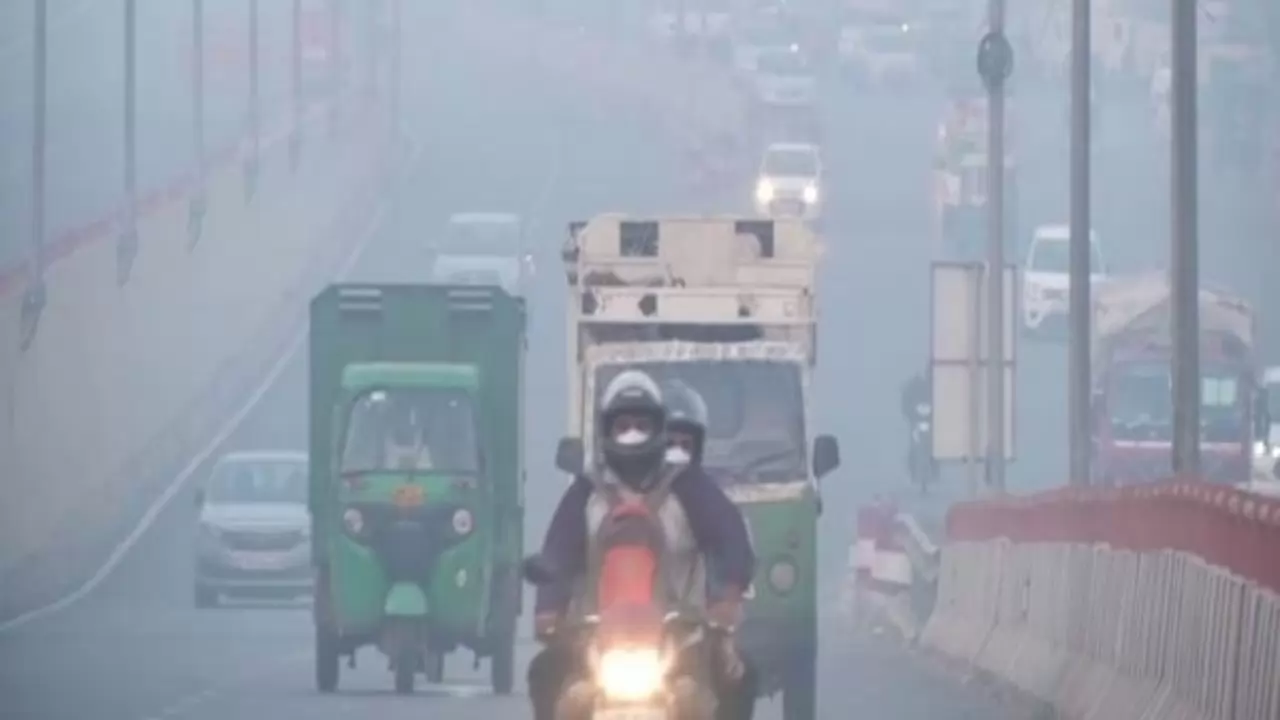
Air pollution (Representative Image) (ANI)
Delhi Air Pollution causes: As air quality in Delhi-NCR plummets once again, the debate over the leading cause of pollution intensifies. Recent data from the Central Pollution Control Board (CPCB) shows Delhi's AQI reached 352, marking it as "very poor" and nearing the hazardous "severe" level of 400, typical in winter. The alarming situation has prompted the government to double fines for stubble burning, a move following the Supreme Court’s criticism of previous ineffective measures.
Following the Supreme Court’s remarks, the government has now imposed stricter fines on stubble burning, widely perceived as a significant contributor to Delhi's pollution. Farmers with less than two acres will face a Rs 5,000 penalty, those with two to five acres Rs 10,000, and owners of over five acres Rs 30,000. This represents a significant increase from previous fines, yet questions remain about stubble burning’s actual impact on Delhi’s air quality relative to other factors.
While stubble burning has become a focal point in discussions about Delhi’s pollution, research suggests it might not be the most impactful factor. A study by the Centre for Science and Environment (CSE) finds that stubble burning contributes only 8.2% to Delhi’s pollution. Local sources are responsible for over 30%, while contributions from nearby NCR districts stand at 35%. The most substantial culprit, according to the study, is vehicle emissions.
Vehicular pollution remains the leading contributor to PM2.5 levels in Delhi, responsible for a staggering 51.5% of PM2.5 in the air. This particulate matter, 100 times thinner than a human hair, poses severe health risks as it easily penetrates the lungs and bloodstream. According to the CSE, PM2.5 emissions from vehicles are a persistent and increasing threat to public health.
The CSE study highlights that residential activities contribute around 13% to PM2.5 levels, while industries add 11%. Even public transport, particularly aging or under-maintained buses, contributes significantly. Cases of buses breaking down in transit rose from 781 in 2018-19 to 1,259 in 2022-23, further impacting pollution. Long wait times and costly fares have also pushed many commuters to favor private vehicles over public transit, aggravating the pollution problem.
Delhi’s rapid increase in vehicle registrations exacerbates the pollution issue. The Economic Survey 2023-24 reports over 85 lakh registered vehicles in Delhi, with over 6 lakh new registrations annually. Daily, 1.1 million vehicles enter and exit the city. The surge, especially in two-wheelers and four-wheelers, has escalated nitrogen oxides (NOx) levels, responsible for 81% of NOx emissions in Delhi, intensifying the air quality crisis.
Addressing Delhi’s air pollution demands a balanced approach targeting both agricultural and urban factors. Stubble burning fines alone may not suffice to curb pollution levels. A concerted effort towards sustainable urban planning, improved public transport infrastructure, and strict vehicular emissions controls is essential to reduce Delhi’s severe AQI levels effectively.





Copyright © 2025 Top Indian News
